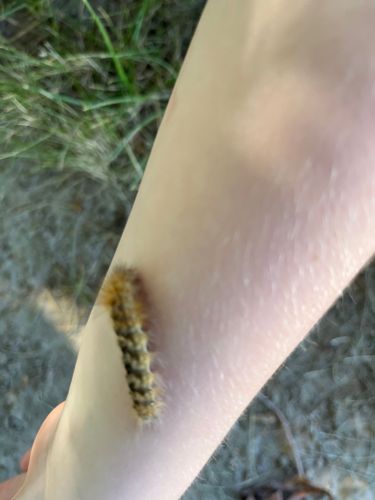Eastern Tent Caterpillar
Scientific Name: Malacosoma americanum
Order & Family: Order: Lepidoptera, Family: Lasiocampidae
Size: Larvae (caterpillars) typically reach 2.5 to 5 cm (1 to 2 inches) in length. Adult moths have a wingspan of 2.5 to 4.5 cm (1 to 1.75 inches).

Natural Habitat
Found in deciduous forests, orchards, and suburban areas throughout eastern North America, especially where host trees are abundant.
Diet & Feeding
Larvae are herbivorous, feeding primarily on the leaves of deciduous trees and shrubs, particularly fruit trees like cherry, apple, and plum, as well as oak, maple, and birch. Adults typically do not feed.
Behavior Patterns
Eastern Tent Caterpillars are social during their larval stage, living communally in silken tents they construct in the forks of branches. They venture out to feed on leaves and return to the tent at night or during cold, rainy weather. They undergo pupation in cocoons spun in sheltered locations. The adult moths are nocturnal.
Risks & Benefits
Risks: The hairs on Eastern Tent Caterpillars can cause skin irritation (dermatitis) and allergic reactions in some individuals upon contact. They are also considered pests in orchards and forests due to defoliation, which can weaken trees. Benefits: They are a food source for birds and other predators. Defoliation can contribute to nutrient cycling in forest ecosystems.
Identified on: 8/31/2025